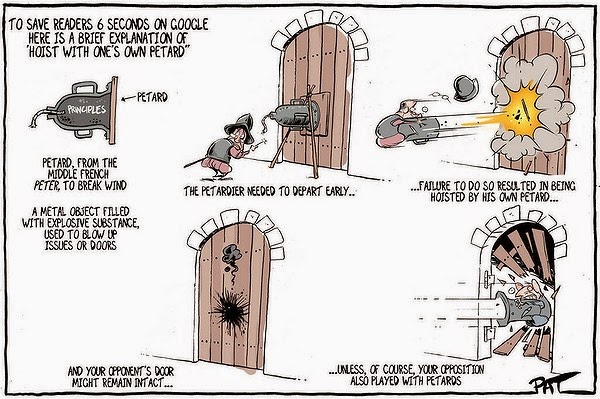 I have never met a Komondor I liked. All two of them. I have met many Pit Bulls that I liked. Two of the best examples of my work in my entire career are Pit Bulls. However, if every Pit Bull on the planet disappeared tomorrow it wouldn’t bother me all that much. Komondors too… and rescued racing Greyhounds…and a rather long list of dogs I don’t fancy for a variety of reasons. It’s not that I wouldn’t work with them or think they should be banned or actually removed from the planet – they simply aren’t my favorites. Pit Bulls are stigmatized in public. Whether that is justified or not isn’t my point. Their reputation can make my job more difficult. Racing Greyhounds are often very quiet dogs that are not as dynamic as I prefer. The only Komondors I worked with were both dangerous dogs. Making a determination about a breed from two dogs is stupid – so call me stupid. When I see that third one I will treat it objectively and have my spidey-senses on high alert until it proves it’s a nice doggie. Continue reading
I have never met a Komondor I liked. All two of them. I have met many Pit Bulls that I liked. Two of the best examples of my work in my entire career are Pit Bulls. However, if every Pit Bull on the planet disappeared tomorrow it wouldn’t bother me all that much. Komondors too… and rescued racing Greyhounds…and a rather long list of dogs I don’t fancy for a variety of reasons. It’s not that I wouldn’t work with them or think they should be banned or actually removed from the planet – they simply aren’t my favorites. Pit Bulls are stigmatized in public. Whether that is justified or not isn’t my point. Their reputation can make my job more difficult. Racing Greyhounds are often very quiet dogs that are not as dynamic as I prefer. The only Komondors I worked with were both dangerous dogs. Making a determination about a breed from two dogs is stupid – so call me stupid. When I see that third one I will treat it objectively and have my spidey-senses on high alert until it proves it’s a nice doggie. Continue reading
Author Archives: Gary Wilkes
Getting “Wrong”, right.
Variability and getting ‘wrong’, right.
The least studied topic in training and behavior is variability. The major focus of training is to create a repertoire according to a template for excellence. Deviation from that template is called an error. This misses the point of the fundamental aspects of learning. To learn, one must offer a deviation from former behavior. Without deviation there is no learning. The cause of deviation is innate variability. This ability is critical for survival because the environment is dynamic. One-trick-ponies die out if their trick stops working. Variability insures that an animal can adapt to changing circumstances. This leads to a simple point. What constitutes an error in one setting may be the solution in another. If you punish the deviation as an error, you may unintentionally block its use elsewhere. The better option is to learn how to invoke or inhibit deviation in both learning and performance.
Continue reading
Prep for Gary Wilkes’ Broad Band Training Seminars
I tend to draw from many different training perspectives. That means that if I can give you a heads-up about a few simple things that will allow you and your dog to benefit it makes sense for you to invest a little time before you get there.
A: Creating your first tool.
Continue reading
Hoist by their own Positive Petard:
 There is a list created by a well-known ‘positive’ trainer that cites 12 reasons why you shouldn’t use punishment. One of the objections is this…
There is a list created by a well-known ‘positive’ trainer that cites 12 reasons why you shouldn’t use punishment. One of the objections is this…
“Punishment doesn’t actually teach the animal anything, it stops behavior from happening.”
On the surface this looks like a credible objection. It is parroted by literally thousands of dog trainers and major ‘experts’ in the behavior niche. In the broader, real world, it is lunacy. As with all skeptical views, I start with accepting the premise and then pick at it to sees if it still makes sense. This doesn’t.
Continue reading
